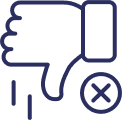Written by Sharon O'Day
HealthCare Writer
We want to help you make educated healthcare decisions. While this post may have links to lead generation forms, this won’t influence our writing. We adhere to strict editorial standards to provide the most accurate and unbiased information.
From its wide-open plains to Yellowstone’s natural wonders, Wyoming remains a stunning and tranquil place to live — and understanding your health insurance options here is key to protecting your health and finances.
As of 2025, the uninsured rate in Wyoming reflects persistent coverage challenges but steady marketplace enrollment. If you’re currently without coverage, here’s what you need to know about getting insured in the Cowboy State.
Health Insurance Options in Wyoming
Wyoming offers a range of health insurance options tailored to residents’ needs, depending on age, income, employment, and family size. Here are the most common coverage types available:
Employer-Sponsored Insurance
Many people in Wyoming receive health insurance through their employer. If your workplace offers coverage, this is usually the most cost-effective and convenient option.
ACA Marketplace Plans
The Affordable Care Act (ACA) allows individuals and families to buy health insurance through the federal Marketplace. These plans offer essential health benefits, free preventive care, and protection for preexisting conditions.
Individuals and families without employer coverage can shop for insurance through HealthCare.gov.
If you don’t have employer coverage, you may qualify for subsidies to lower your premiums.
Use our ACA Subsidy Calculator to check your eligibility.
Starting this year, the Centers for Medicare & Medicaid Services (CMS) is requiring income verification to confirm eligibility for premium subsidies. As part of this effort, CMS will reduce the ACA subsidies by $5 per month for individuals who are automatically re-enrolled in fully subsidized plans without verified eligibility.
Get Quotes Matched to Your Budget and Needs
ACA Plan Types
ACA marketplace plans come in Bronze, Silver, Gold, and Platinum tiers, each with different levels of cost-sharing and coverage. Plans also vary by provider networks and out-of-pocket expenses, so compare carefully to find what fits your needs.
Marketplace Plans:
- Bronze: Low monthly premiums, higher out-of-pocket costs; ideal for minimal healthcare usage.
- Silver: Moderate costs; eligible for cost-sharing reductions (CSRs).
- Gold: Higher monthly premiums with lower out-of-pocket costs; best for frequent healthcare users.
- Platinum: Highest premiums, lowest out-of-pocket costs (not always available in all states).
Metal Tier Breakdown:
| Metal Tier | Insurance Company Pays | Consumer Pays |
| Bronze | 60% | 40% |
| Silver | 70% | 30% |
| Gold | 80% | 20% |
| Platinum | 90% | 10% |
Short-Term Medical Plans
Short-term medical (STM) plans offer temporary health coverage and can be a practical solution for individuals who are between jobs, recently lost employer coverage, waiting for ACA or Medicare eligibility, or need affordable protection during a coverage gap. These plans are available in this state and follow federal rules, but they are not regulated by the ACA. That means they can deny coverage based on pre-existing conditions and typically do not include comprehensive benefits like maternity, mental health, or preventive care.
While short-term medical plans are not a substitute for long-term health insurance, they may be ideal in situations where you’re temporarily uninsured—such as after job loss or before new coverage begins—and want short-term protection from unexpected medical events.
STM Plan Enrollment
Unlike ACA-compliant plans, short-term health insurance is available year-round.
Quick Coverage Start: Many short-term plans can begin as soon as the next day after your application is approved.
Medicaid
Wyoming Medicaid provides free or low-cost coverage for eligible low-income residents. Medicaid benefits typically include preventive care, hospital visits, mental health, prescriptions, and more.
Wyoming has not expanded Medicaid under the ACA, which leaves some adults ineligible under current income guidelines. However, children, pregnant women, and others may still qualify based on household income and circumstances.
Children’s Health Insurance Program (CHIP)
Known as Kid Care CHIP in Wyoming, this program helps children and pregnant women in families that earn too much for Medicaid but still need affordable insurance. Coverage includes preventive care, doctor visits, hospital services, and more.
Get Quotes Matched to Your Budget and Needs
Student Health Insurance
College students in any state have multiple health insurance options, including staying on a parent’s plan until age 26, enrolling in a school-sponsored plan, or applying for coverage through the ACA Marketplace. Depending on your income and location, you may also qualify for Medicaid, CHIP, or low-cost catastrophic or short-term plans—making Wyoming student health insurance accessible and flexible for a wide range of needs.
Medicare
Medicare plans are available for residents aged 65+ and younger individuals with qualifying disabilities. Options include:
- Medicare Advantage (Part C)
- Medicare Advantage is an alternative to Original Medicare offered by private insurers to those enrolled in Parts A and B. These plans often include extra benefits and cost protections but typically require using a specific network of providers.
- Prescription Drug Plans (Part D)
- Medicare Part D provides prescription drug coverage for anyone with Medicare, helping pay for medications and many vaccines. Offered by private insurers, these plans vary in cost and coverage and can be joined during specific enrollment periods.
- Medicare Supplement (Medigap)
- Medicare Supplement plans, or Medigap policies, help cover the out-of-pocket costs that Medicare Part A and Part B don’t pay. Since Original Medicare (Parts A and B) lacks an out-of-pocket maximum, these plans can limit your expenses for medical services.
COBRA Coverage
If you’ve recently lost job-based insurance, COBRA allows you to temporarily continue your employer coverage, usually at full cost.
Enrollment Periods in Wyoming
Open Enrollment for 2026 Coverage:
November 1, 2025 – January 15, 2026
During this window, all eligible residents can apply for, renew, or change their marketplace health plans.
Special Enrollment Period:
Available year-round for those experiencing qualifying life events (QLE), such as:
- Loss of coverage
- Marriage or divorce
- Birth or adoption of a child
- Relocation
- Major change in income
You typically have 60 days from the event to enroll.
Health Insurance Providers in Wyoming
As of 2025, these insurers typically offer individual and family plans through the federal Marketplace:
Plan availability may vary by county or zip code. Be sure to check your eligibility and provider network options when enrolling.
Understanding Health Insurance Costs
When selecting a plan, be sure to understand these common cost terms:
- Premium: Monthly payment to maintain your plan.
- Deductible: What you pay before insurance covers services.
- Copayment (Copay): Fixed amount per visit/service.
- Coinsurance: Shared costs with your insurer after the deductible.
- Out-of-Pocket Maximum: Your yearly cost cap for covered services.
- In-Network vs. Out-of-Network: Staying in-network helps you avoid higher charges.
Understanding health insurance doesn’t have to be overwhelming. This glossary offers clear definitions of key terms—from agents to costs like copayments, coinsurance, and deductibles—to help you make confident coverage decisions.
A team of licensed insurance agents are here to help you compare plans
Bottom Line
Health insurance in Wyoming comes with many choices—whether from your employer, through the ACA marketplace, or public programs like Medicaid and Medicare. By staying informed and comparing plans during the right enrollment periods, you can secure affordable, reliable coverage that supports your well-being and budget.
Need help choosing a plan? Use our ACA Subsidy Calculator to see if you are eligible for ACA financial aid or speak with a licensed insurance agent about all your options.
Thank you for your feedback!
Kaiser Family Foundation. “Population Distribution by Age.” kff.org (accessed March 14, 2020).
Kaiser Family Foundation. “Health Insurance Coverage of the Total Population.” kff.org (accessed March 14, 2020).
Kaiser Family Foundation. “Distribution of the Nonelderly with Employer Coverage by Age.” kff.org (accessed March 14, 2020).
Kaiser Family Foundation. “State Health Care Snapshots: Wyoming.” kff.org (accessed March 14. 2020).
Kaiser Family Foundation. “Marketplace Enrollment, 2014-2020.” kff.org (accessed March 14, 2020).
Advisory Board. “Where the states stand on Medicaid expansion.” advisory.com (accessed March 14, 2020).
Kaiser Family Foundation. “The Coverage Gap: Uninsured Poor Adults in States that Do Not Expand Medicaid.” kff.org (accessed March 14, 2020).
Kaiser Family Foundation. “Number of Issuers Participating in the Individual Health Insurance Marketplaces.” kff.org (accessed March 14, 2020).
Kaiser Family Foundation. “State Health Insurance Marketplace Types, 2020.” kff.org (accessed March 14, 2020).
Wyoming Department of Insurance. “Affordable Care Act.” doi.wyo.gov (accessed March 14, 2020).
Wyoming Department of Insurance. “Consumer Assistance for Health Insurance Marketplace in Wyoming.” doi.wyo.gov (accessed March 14, 2020).
Kaiser Family Foundation. “Average Marketplace Premiums by Metal Tier, 2018-2020.” kff.org (accessed March 14, 2020).
Kaiser Family Foundation. “Marketplace Average Benchmark Premiums.” kff.org (accessed March 14, 2020).
Kaiser Family Foundation. “Marketplace Effectuated Enrollment and Financial Assistance.” kff.org (accessed March 14, 2020).
Kaiser Family Foundation. Estimated Total Premium Tax Credits Received by Marketplace Enrollees.” kff.org (accessed March 14, 2020).
Effectuated Enrolment: Early 2021 Snapshot and Full Year 2020 Average. cms.gov, accessed August 26, 2021.
Kaiser Family Foundation. “Distribution of the Total Population by Federal Poverty Level (above and below 200% FPL).” kff.org (accessed March 14, 2020).
Kaiser Family Foundation. “Health Insurance Coverage of Low Income Adults 19-64 (under 200% FPL).” kff.org (accessed March 14, 2020).
U.S. Government Website for Medicaid. “December 2019 Medicaid & CHIP Enrollment Data Highlights.” medicaid.gov (accessed March 14, 2020).
Kaiser Family Foundation. State Health Facts. Kff.org, accessed August 26, 2021.
Kaiser Family Foundation. “Total Monthly Medicaid and CHIP Enrollment.” kff.org (accessed March 14, 2020).
Wyoming Department of Health. “Programs and Eligibility.” health.wyo.gov (accessed March 14, 2020).
Centers for Medicare and Medicaid Services. “Prescription Drug Coverage – General Information.” cms.gov (accessed March 14, 2020).
Cubanski, Juliette, Anthony Damico and Tricia Neuman. “Medicare Part D in 2018: The Latest on Enrollment, Premiums and Cost Sharing.” Kaiser Family Foundation, May 17, 2018 (accessed March 14, 2020).
Centers for Medicare and Medicaid Services. Calculated from 2020 PDP Landscape Source Files (v 10 15 10) “Prescription Drug Coverage – General Information.” cms.gov (accessed March 14, 2020).
Wyoming Department of Insurance. “Wyoming Buyer’s Guide to Medicare Supplement ‘Medigap’ Insurance.” doi.wyo.gov (accessed March 14, 2020).
Wyoming Department of Insurance. “Wyoming Health Insurance Pool.” doi.wyo.gov (accessed March 14, 2020).
Internal Revenue Service, Department of the Treasury; Employee Benefits Security Administration, Department of Labor; Centers for Medicare & Medicaid Services, Department of Health and Human Services. “Short-Term, Limited-Duration Insurance.” Federal Register Vol. 83, No. 150 (Aug. 3, 2018) (accessed March 14, 2020).







